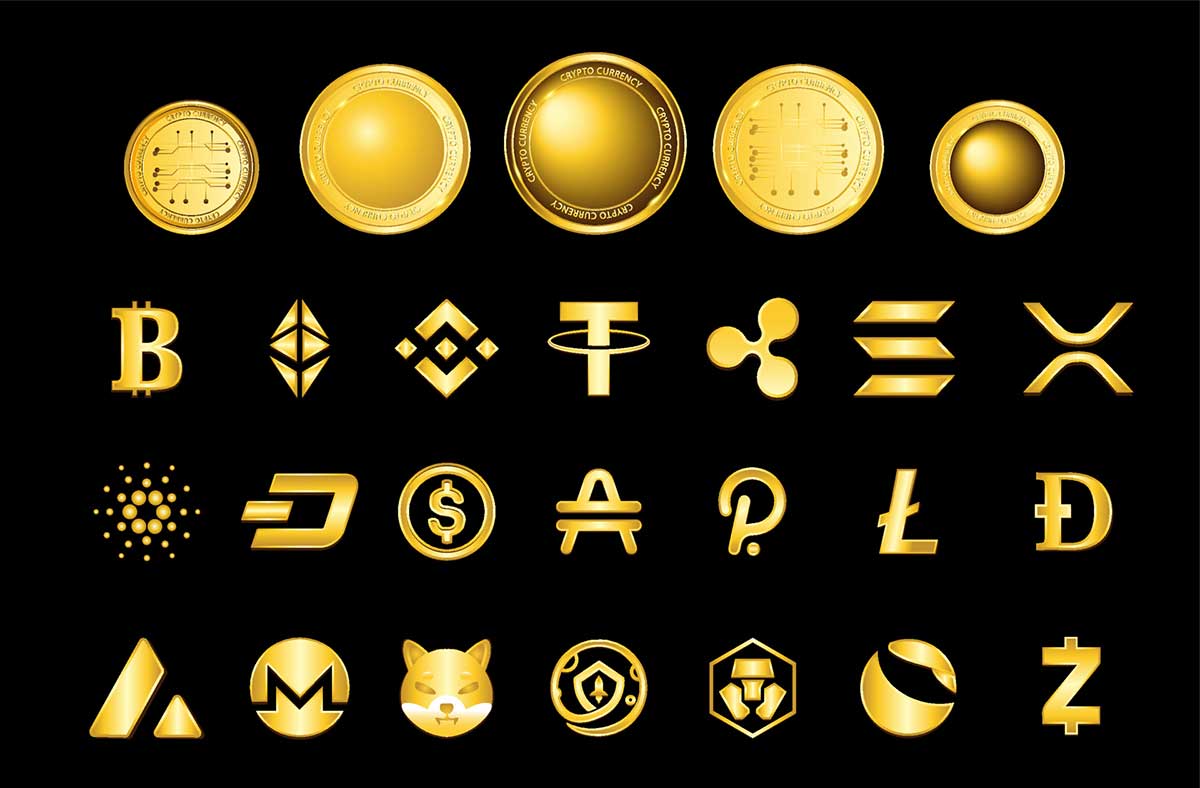Scaling Up: New Solutions for Crypto Coin Scalability in 2023

In 2023, solutions for crypto coin scalability will evolve significantly. With the rise of decentralized finance (DeFi) and other blockchain-based applications, there will be a greater demand for fast transactions with low fees. Numerous scaling solutions are currently being explored to address these issues.
One such solution is off-chain scaling which involves transferring data away from the main chain in order to facilitate faster transactions without sacrificing security and decentralization. This could be done by using side chains or layer 2 protocols like Lightning Network or Plasma. Another approach is sharding, whereby data is split into multiple shards that can be processed in parallel leading to improved performance on blockchains with large transaction volumes.
Finally, new consensus algorithms such as Proof of Stake (PoS) may also help scale up cryptocurrencies since they require less energy than traditional proof of work systems while still providing adequate security guarantees. In summary, there are many potential solutions that could improve cryptocurrency scalability in 2023 but it remains to be seen which ones will actually gain traction and become widely adopted within the industry.
As the world of cryptocurrency continues to evolve, scalability is an ever-present challenge. To meet the needs of investors and developers alike, new solutions for crypto coin scalability must be created in order to ensure secure, reliable transactions without sacrificing speed or security. In 2023, we are likely to see a range of innovative solutions that will help crypto coins scale up quickly and efficiently.
These may include sidechain technology, sharding models, lightning networks and more – all designed to make it easier for users to send and receive payments with minimal fees and risk. With these new solutions in place, cryptocurrencies can finally reach their full potential as both an investment opportunity and a practical means of payment.
Arbitrum – Solutions for the blockchain scalability trilemma | 15-minute fundamentals ep.40
What are the Predictions for Crypto in 2023?
In 2023, we can expect to see the cryptocurrency market continue to grow and become even more mainstream. More businesses are likely to accept crypto as a form of payment, making it easier for consumers and investors alike to use them in everyday transactions. Additionally, we will likely see an increase in investment banking products that embrace cryptocurrencies, such as derivatives based on digital assets or tokenized securities backed by cryptos.
Regulations around crypto may also eventually be put in place which could further legitimize the industry and open up new opportunities for growth. As blockchain technology continues to advance, so too should the potential applications of cryptocurrencies expand – making 2023 another exciting year for the world of crypto!
Which Crypto Will Grow Most in 2023?
It’s difficult to predict which cryptocurrency will grow the most in 2023, as there are so many factors that can influence its growth. However, some of the cryptocurrencies that could potentially experience strong gains include Bitcoin (BTC), Ethereum (ETH), Litecoin (LTC) and Ripple (XRP). All four of these altcoins have had significant price increases over the past year or two and continue to attract investors from around the world.
Additionally, with new developments such as decentralized exchanges, smart contracts and blockchain-based applications being released regularly for each cryptocurrency, their potential for continued growth is considerable. Ultimately though, it remains to be seen which crypto asset will become a top performer in 2023.
Which Crypto Will Explode in 2023?
It’s impossible to predict which crypto will explode in 2023, as the market is ever-changing and unpredictable. However, some of the most promising coins that could make a significant impact are Ethereum 2.0, Polkadot, Cardano, Binance Coin (BNB) and Filecoin (FIL). These projects all have strong teams behind them with ambitious plans for scalability and development over the next few years.
All of these cryptos offer something unique to investors and could lead to massive growth if they continue on their current trajectory. Additionally, newer entrants into the space such as Libra or Solana may also be worth keeping an eye on over the next few years – due to their potential use cases or partnerships with major players in finance/tech industries.
Which Cryptocurrency is Best to Invest in 2023?
The answer to which cryptocurrency is best to invest in 2023 depends largely on your individual investment goals and risk tolerance. That being said, there are several projects that should be considered for long-term investments due to their potential for growth and stability. These include Ethereum, Cardano, Polkadot, Binance Coin, Bitcoin Cash (BCH), Litecoin (LTC), Stellar Lumens (XLM) and Tether (USDT).
Each of these cryptocurrencies has the potential to increase significantly in value over the next few years thanks to a variety of factors such as increasing mainstream adoption, technological advancements and increased regulatory acceptance. Ultimately though it is important for any investor considering cryptocurrency investments in 2023 or beyond to do their own research and make decisions based on their own personal financial situation.

Credit: www.cybavo.com
Transaction Settlement on the Blockchain is Known As
Transaction settlement on the blockchain is known as “smart contract” technology, which allows for two parties to exchange funds and assets without having to rely on a third-party intermediary. By leveraging the distributed ledger of the blockchain, smart contracts enable secure and automated transactions that are confirmed instantly and cannot be reversed or disputed. Furthermore, due to transparency provided by the blockchain, all participants in a transaction can view its progress at any time.
Crypto Energy Consumption Comparison
As the world continues to move into a digital future, cryptocurrencies have become increasingly popular for their convenience and security. One of the most important questions many people have is what kind of energy does cryptocurrency use? In comparison to other forms of payment such as credit cards or cash, crypto currencies require more computing power which leads to an increased amount of energy consumption.
This can be seen in the fact that Bitcoin’s estimated annual electricity consumption stands at around 73TWh per year, equivalent to 0.27% of total global electricity usage; while Visa’s estimated yearly electricity consumption is only 250GWh per year- just 0.001%. It’s clear that when looking at energy consumption comparisons between traditional payment methods and cryptos, there is no competition – cryptocurrencies consume much more energy on average than conventional forms of payment.
Ethereum Transaction Speed
Ethereum transactions are incredibly fast compared to other cryptocurrencies, with an average block time of around 15 seconds. This means that Ethereum can process far more transactions per second than Bitcoin at a much faster rate, allowing it to be used for larger and more complex applications. Additionally, the network is constantly being improved upon in order to increase its transaction speed even further.
How is New Ethereum Created
New Ethereum is created through a process called mining, wherein miners use their computing power to solve complex cryptographic puzzles in order to create new blocks on the blockchain. By successfully solving these puzzles and creating new blocks, miners are rewarded with Ether tokens which can then be used as currency or exchanged for other cryptocurrencies. The amount of Ether released each year is predetermined by the Ethereum protocol and reduces over time.
Blockchain Energy Consumption Problem
Blockchain technology has revolutionized the digital world, but it has come with a cost: energy consumption. Blockchain networks are powered by computers and servers around the world, all of which require electricity to function. This means that blockchain networks generate large amounts of carbon emissions from their power sources, contributing to global climate change.
Fortunately, there are ways to reduce this environmental impact — such as transitioning to more efficient consensus protocols or using renewable energy sources — but these solutions must be implemented in order for us to truly address the blockchain energy consumption problem.
Ethereum Speed
Ethereum is a decentralized, open-source blockchain platform that facilitates smart contracts and the execution of DApps. Ethereum has gained a lot of popularity due to its ability to process transactions quickly and efficiently. The speed of Ethereum depends on several factors such as the number of nodes in the network, transaction fees, block size limit etc.
Currently, Ethereum can handle up to 15 transactions per second but with an upcoming update called ‘sharding’, it will be able to process thousands or even millions of transactions per second which is far better than other cryptocurrencies.
Crypto is a Waste of Energy
Cryptocurrency is often criticized for its high energy consumption, with estimates that it consumes more than entire countries. While the use of blockchain technology has revolutionized digital transactions and data security, many argue that these benefits are offset by the significant amount of electricity used to power cryptocurrency mining operations. Furthermore, as cryptocurrency becomes increasingly integrated into global financial systems, environmental activists worry about the potential long-term effects of such a large-scale drain on natural resources.
Ethereum Change
Ethereum Change is a protocol that enables users to securely exchange Ethereum tokens between different blockchains. It utilizes atomic swaps, which allow for the simultaneous swapping of two different currencies without trust or custodial involvement. This means that users can quickly and easily convert their funds into other cryptocurrencies, allowing them to take advantage of market opportunities as they arise.
By using Ethereum Change, users gain access to greater liquidity and better prices on transactions.
Conclusion
This blog post has provided a comprehensive overview of the current and upcoming solutions for crypto coin scalability in 2023. As we have seen, various approaches such as sharding, layer-two scaling, and sidechains are being developed that can enable faster transaction processing with improved security. These technologies will open up new possibilities for large-scale adoption of cryptocurrencies by providing a secure platform for billions of users to transact on.
All this indicates that cryptocurrency scalability is about to take off in 2023 and beyond, allowing us to experience the true potential of digital currencies.







